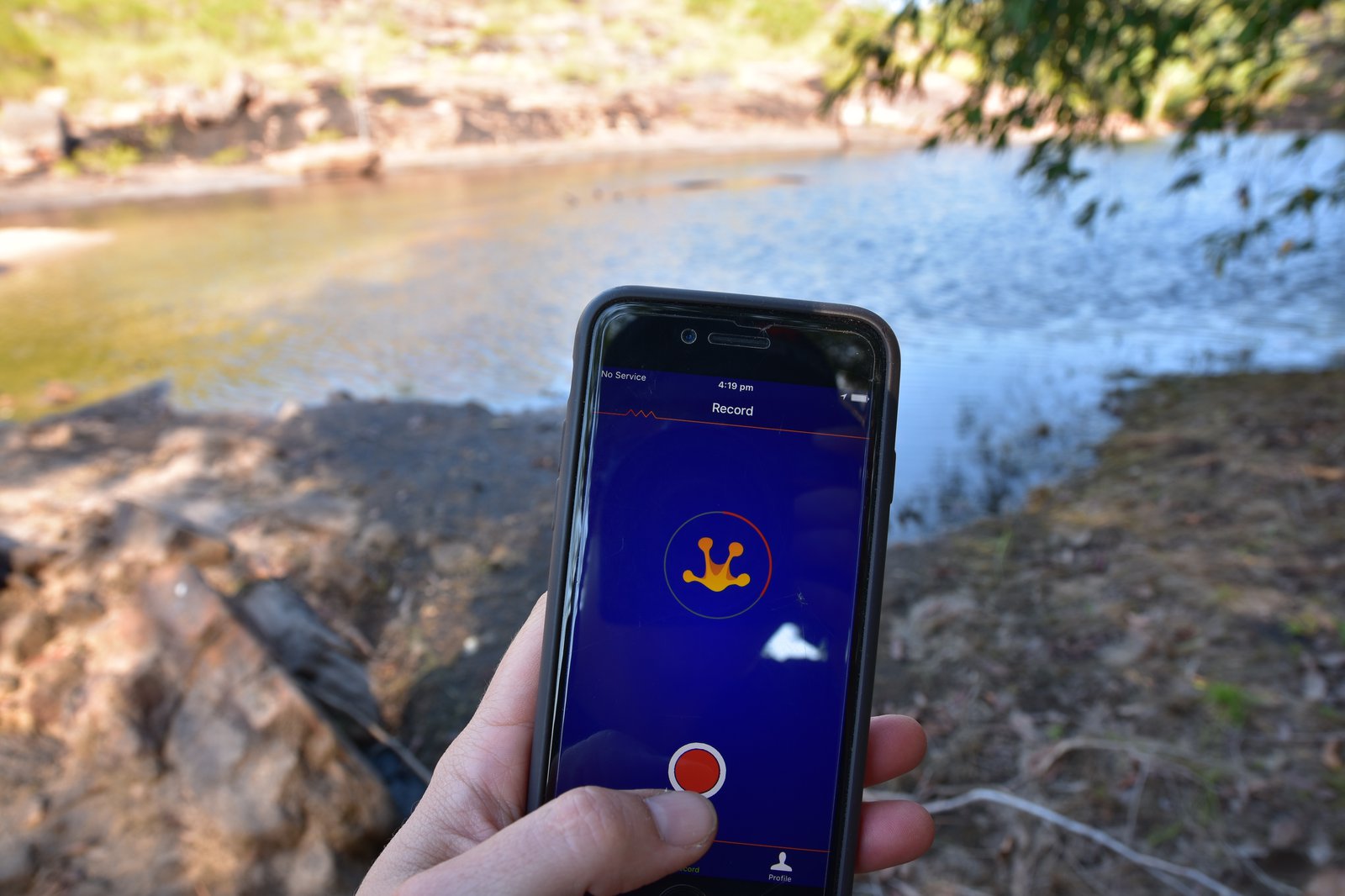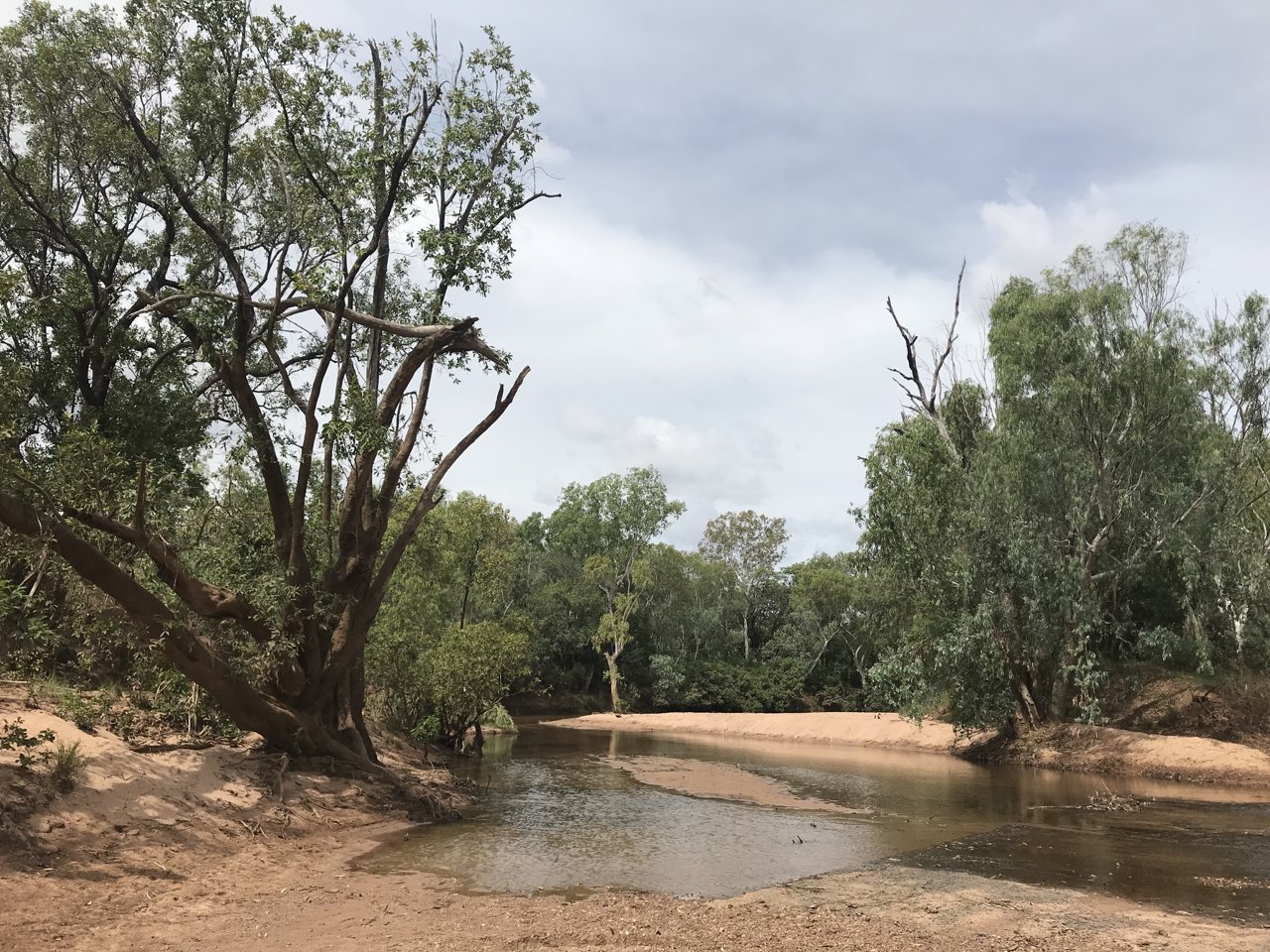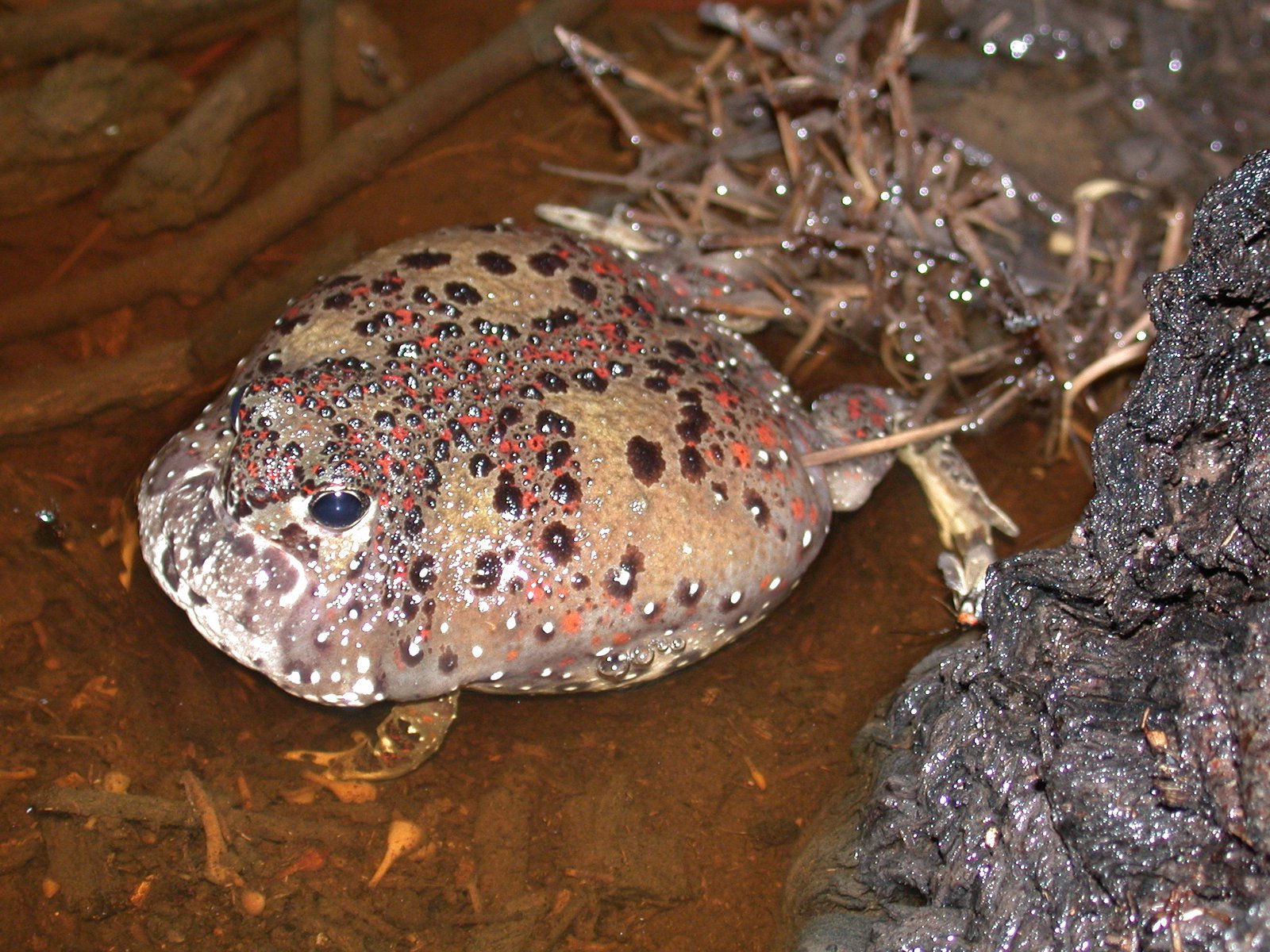Tips for taking your FrogID submissions to the next level

Dr Jodi Rowley recording with FrogID app
Image: Stephen Mahony© Australian Museum
FrogID is a national citizen science project led by the Australian Museum. Launched in November 2017, thousands of participants across Australia have already submitted almost 100,000 recordings resulting in nearly 150,000 records of frogs.
Contributing to the project is easy- download the free FrogID app, register and then record 20–60 second audio recordings of calling frogs. The app adds time, date, latitude, longitude, and an estimate of precision of geographic location to each submission. The recordings are uploaded to the FrogID database and each submission is then listened to and the frog species calling are identified by FrogID validators (scientists with expertise in frog species identification via advertisement calls). You can even make recordings when you don’t have phone reception, you simply need to open the app once you return to reception or have a wifi connection to make sure your recordings are uploaded.
There’s no set of rules around recording frogs, we want it to be as easy as possible, but here are some suggestions if you want to take your recordings to the next level!

Calling male Bumpy Rocket Frog (Litoria inermis), Queensland, Australia.
Image: Jodi Rowley© Jodi Rowley
Record often- daily if possible
Having repeat recordings of frogs over time- even if it’s a lone Striped Marsh Frog (Limnodynastes peronii) or Green Tree Frog (Litoria caerulea) in your backyard pond- is important. It helps us get a better understanding of when frogs breed- what kinds of temperature and rainfall patterns different frog species need to breed (or at least call), and how they might be responding to a changing climate. If you have a spot or spots you regularly hear frogs- maybe your backyard pond or a creek next to the road on your nightly dog walk- please record frogs every night you can!
Record near and far: put frogs on the map
Repeat recordings are fantastic, but so are recordings from as many places as possible. The frog species calling in your backyard pond are likely to be different from those in the nearby creek, and the frogs a couple of kilometers down the road may also be different. Recordings from more places across Australia help us understand the true distribution of frogs – providing records of what species was calling where and when (biodiversity records) and helps inform land-use decisions and conservation priorities. So, don’t forget to use FrogID wherever you hear frogs- near or far from home!

The FrogID app.
Image: Jodi Rowley© Australian Museum
Narrowing down: better for bioacoustics
Every recording with an identifiable frog calling- no matter how quiet it is- is a fantastic biodiversity record. But each recording has a dual purpose in FrogID, both as a biodiversity record and as an audio file of one or many calling frogs. Just how useful each audio file is will depend on what the research question is, but if you’re within a few meters of a calling frog (remembering your safety and to not disturb the frog or the habitat) it can be helpful to point the bottom of your phone towards the frog (the microphone is at the bottom of the phone) and get a clear recording of single frogs (or single individuals of each different frog species at a site). Clear recordings of a single calling frog helps us better understand how frog “accents” vary across the country, even within a single species, and, for example, how they may change in response to urbanisation. Strange calls might even belong to species currently unknown to science!

Calling male Eastern Banjo Frog (Limnodynastes dumerilii), NSW, Australia.
Image: Jodi Rowley© Australian Museum
Take a photo: from vast swamps to backyard ponds
Habitat photos, such as photos of the pond or creek, are really useful (although often a challenge at night)! If you can see the frog calling and can take a photo safely and without disturbing the frog or their habitat, we also love frog photos as they can help us understand how frog species vary in colour and pattern across the country.
Record air temperature: hot frogs are fast frogs
If you have a thermometer, adding the air temperature in the notes will help us understand how frogs respond to temperature more accurately. Local conditions may differ from of the nearest weather station. As frog calls speed up at hotter temperatures, it will also help us understand how great a role temperature plays in shaping a frog’s call.

Frog habitat, Northern Territory, NT.
Image: Jodi Rowley© Australian Museum
Overall: feel free to just keep doing what you’re doing!
All the above are suggestions for those that want to do a little extra. We love any and all submissions of calling frogs and all are incredibly valuable in helping understand our amazing amphibians and informing their conservation.
One more thing: remember to follow the FrogID safe frogging protocol!
- When you go frogging, please careful where you tread. Don't disturb frog habitat and do not touch frogs
- Clean and disinfect your footwear between frog habitats, so as not to spread frog diseases between sites. Harmless to people, pathogens that cause diseases such as the amphibian chytrid fungus (Batrachochytrium dendrobatidis) are a serious threat to frogs in Australia.
- Be safe and only access areas you have permission to be in.
Happy Frogging!

Calling male Crucifix Frog (Notaden bennettii), NSW, Australia.
Image: Jodi Rowley© Jodi Rowley
Dr Jodi Rowley
Australian Museum Research Institute & UNSW Sydney
Adam Woods
Australian Museum Research Institute
More information
- FrogID website
- Callaghan, C.T., Roberts, J.D., Poore, A.G.B., Alford, R.A., Cogger, H., Rowley, J.J.L. (2020). Citizen science data accurately predicts expert-derived species richness at a continental scale when sampling thresholds are met. Biodiversity and Conservation. https://doi.org/10.1007/s10531-020-01937-3
- Rowley, J.J.L., Callaghan, C.T., Cutajar, T., Portway, C., Potter K., Mahony, S, Trembath, D.F., Flemons, P. & Woods, A. (2019). FrogID: Citizen scientists provide validated biodiversity data on frogs of Australia. Herpetological Conservation and Biology 14(1): 155-170.

